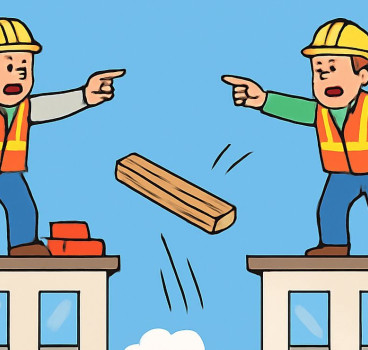Steel - The future of this construction powerhouse
Steel, the ubiquitous metal that has shaped skylines and infrastructure for centuries, sits at a crossroads. While it remains a dominant force in construction, with a global market size exceeding $1.7 trillion in 2023, its evolution faces both challenges and exciting possibilities, writes John Ridgeway.
Replacing a material as deeply ingrained as steel seems unlikely. Its advantages - strength, affordability, flexibility, and recyclability - make it a tough act to follow. However, advancements in other materials and environmental concerns are pushing the boundaries.
Alternatives, such as precast concrete offers advantages like fire resistance and noise insulation, but it lacks steel's tensile strength and requires heavy machinery for installation. Glass-fibre reinforced polymer (GFRP), though lighter and weather-resistant, is currently costlier and has limited structural applications.
As sustainable construction gains momentum, engineered wood products like cross-laminated timber (CLT) are gaining traction. CLT offers impressive strength-to-weight ratios and a reduced carbon footprint, but remains limited in high-rise applications.
Hybrid materials combining steel with carbon fibre, wood, or bamboo are being explored. These offer potential benefits such as reduced weight and enhanced performance, but are still in early stages of development.
And we must not forget that steel itself is evolving. High-strength steel grades are being developed, requiring less material for the same strength, leading to lighter structures
One notable trend in the use of steel in construction is the rise of high-strength, lightweight steel alloys. These advanced materials offer enhanced performance while reducing material usage and construction costs. Additionally, innovations in steel fabrication techniques, such as computer-aided design and manufacturing (CAD/CAM) and robotic welding, have led to greater efficiency and precision in construction processes.
The iconic retractable roof of Wimbledon Centre Court in London uses steel-fabric composites. The lightweight yet incredibly strong panels retract in just 10 minutes, offering weather protection without sacrificing the open-air experience.
The Millau Viaduct in France, the world's tallest bridge, incorporates steel-concrete composites in its deck. This reduces weight while maintaining structural integrity, allowing for a more slender and visually striking design. Steel-fibre reinforced concrete is increasingly used for roads, runways, and other infrastructure projects. The steel fibres enhance toughness and crack resistance, extending service life and reducing maintenance costs.
Steel composites generally offer a superior strength-to-weight ratio compared to traditional steel. This translates to lighter structures, potentially reducing material costs and environmental impact. The combination of materials allows for innovative designs that would not be possible with steel alone. Curved structures, complex shapes, and lighter weight open up new architectural possibilities.
Furthermore, steel's versatility extends beyond structural applications to include cladding, roofing, and interior finishes. Its aesthetic appeal, durability, and ease of maintenance make it a popular choice for architects and designers seeking both form and function in their projects. Self-healing concrete embedded with steel fibres, also shows promise for reducing maintenance costs.
Steel's Environmental Footprint
Steel production, however, carries a significant carbon footprint, accounting for around 7% of global CO2 emissions. The industry is actively seeking solutions. Steel boasts an impressive 90% recyclability rate, making it a leader in circular economy practices. Innovations in electric arc furnaces and green steel production are further reducing emissions.
While initial production emits carbon, steel structures boast longevity and low maintenance needs, offsetting their upfront impact. Comparing the life cycle assessment of steel with alternative materials becomes crucial for sustainable choices.
The primary challenge lies in the traditional steelmaking process, dominated by blast furnaces fuelled by coal and coke. Additionally, mining iron ore and transporting materials add to the industry's carbon footprint. However, the industry is not standing still with a wave of innovative technologies that promises to decarbonise steel production:
Replacing coal with green hydrogen as the primary fuel source holds immense potential. While still in its early stages, this technology could drastically reduce emissions. Capturing and storing carbon emissions from traditional furnaces represents another avenue. However, technical and economic challenges remain. Electric Arc Furnaces (EAFs), powered by renewable electricity, are also making inroads.
It means that predicting the future is fraught with uncertainty, but some trends seem clear. Steel will remain a significant construction material, but its dominance might diminish as alternatives mature and sustainability concerns take precedence.
It is likely that innovation in steel itself will be key, with high-strength grades, composites, and green production methods taking centre stage. Collaboration between architects, engineers, and material scientists will also be crucial to optimise structures for both performance and sustainability.
The future of steel in construction may well be shaped by a combination of technological advancements, sustainability considerations and market dynamics. While steel will continue to play a vital role in many construction projects, alternatives such as engineered timber and advanced concrete are gaining traction for their sustainability and performance benefits.
The global market for steel in construction remains robust, driven by ongoing urbanisation and infrastructure development. However, addressing the environmental impacts of steel production will be essential to ensure its long-term sustainability and viability in the construction industry.
Sources:
- World Steel Association: https://worldsteel.org/
- The World Bank: https://documents1.worldbank.org/curated/en/782481646906336787/pdf/Strengthening-Sustainability-in-the-Steel-Industry.pdf
- Precast Concrete Institute: https://precast.org/
- American Wood Council: https://awc.org/
- Construction Management Association of America: https://www.cmaanet.org/
Additional Blogs

Construction’s obsession with blame instead of learning
Construction is one of the most technically advanced industries in the built environment, yet culturally it often behaves like one of the least reflective. When things go wrong and they frequently...
Read moreHow risk Is routinely pushed down the supply chain
Risk is an unavoidable part of construction. Every project involves uncertainty around ground conditions, weather, design coordination, procurement, labour and programme. Yet while risk is inherent,...
Read more

What if Building Control went fully digital?
Building control governs structural integrity, fire protection, energy efficiency, accessibility and countless other aspects of design and construction. Historically, this process has been highly...
Read more